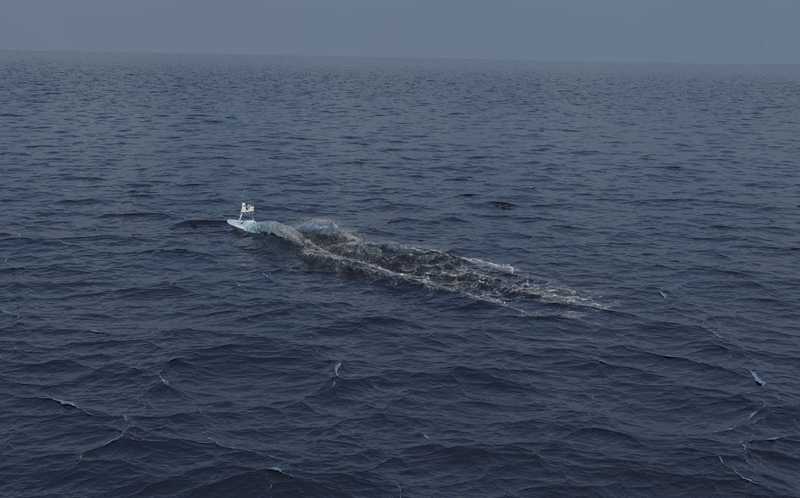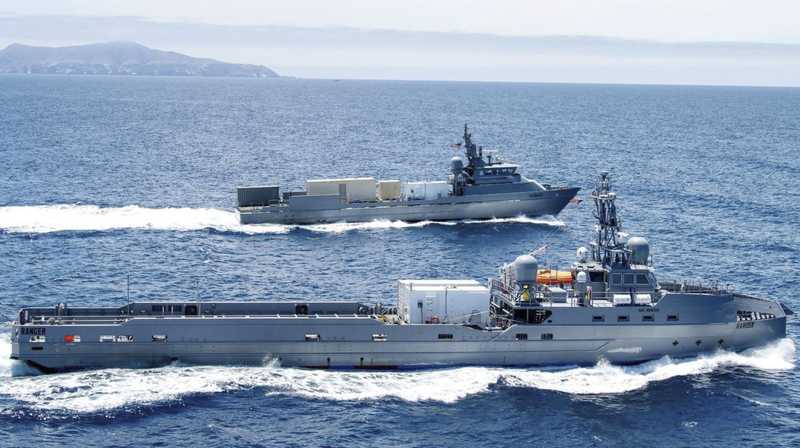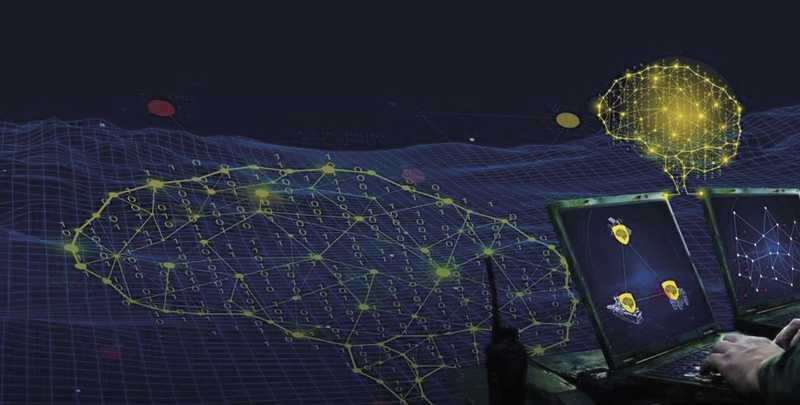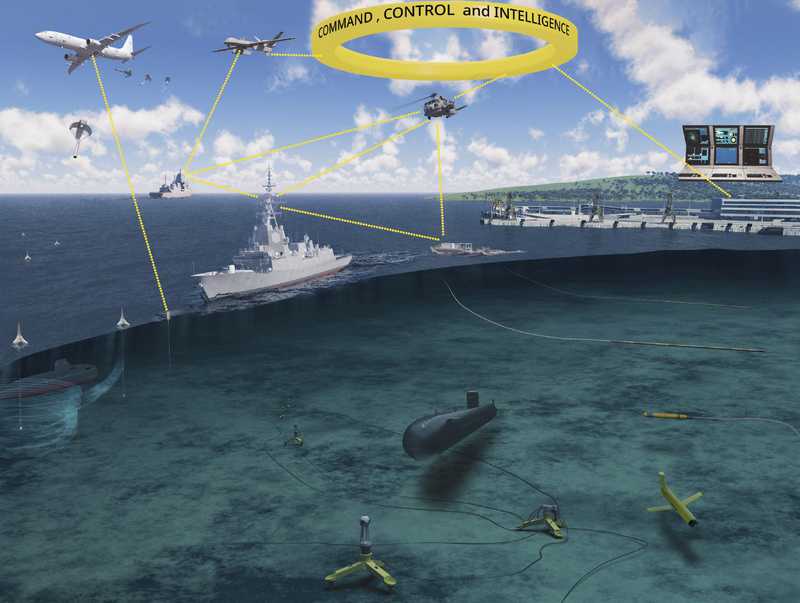The Future of Anti-Submarine Warfare (sponsored)
This story is brought to you by Jason Healey, Ultra Maritime, Senior Manager Business Development.
Most of the world’s global commerce travels by sea. Consumer goods transfer from one maritime nation to another along significant sea routes. However, the international sea route is risky, and functionality only exists if free movement occurs. As a result, countries endeavour to protect their homelands by preventing conflicts in their regional waters and abroad.
To achieve these means, governments worldwide have invested heavily in next-generation submarines and advanced surface ship sonar equipment to help detect, identify, and track their competitors in the maritime environment. This short paper seeks to define the problems facing modern navies, introduce the concept of “do more with less” with potential remedies, and summarize an approach that modern navies should pay close attention to.

Defining the problem
In the past decade, the perceived underwater warfare threat has grown. Near-peer competitors’ submarines are increasing in numbers. In addition, modern conventional submarines have enhanced Air Independent Propulsion systems, allowing them to remain submerged for extended periods with improved effectiveness. The desire to move away from older conventional diesel-powered submarines to much quieter, more powerful submarines has pushed maritime nations to continually invest in developing future Anti-Submarine Warfare (ASW) technologies.
This effort has required a delicate balance of procuring multi-purpose warships, submarines, and naval aircraft. However, a new era is quickly emerging as the future of ASW – the utilization of Autonomous Underwater Vehicles (AUV), Uncrewed Surface Vehicles/Vessels (USVs), complete with containerized towed array sonars and the use of multistatic sonar networks.
The challenge for most modern navies now is that they face increasingly stricter procurement budgets. Consequently, governments require that their armed forces conduct more missions with fewer people and therefore ask industry to provide more capable equipment solutions for less, often under the auspice of multi-purpose warships.

“Do More with Less”
In modern times, navies are being asked by their governments to “do more with less,” by conducting an increased operational mission tempo with fewer ships and sailors. Of course, this is a challenging concept for any navy to manage. Yet, with the potential of increasing utilization of Unmanned Surface Vessels (USVs), modern navies could operate more efficiently, freeing up warships for other mission sets.
Since the end of the Cold War, one could argue that modern navies have put less emphasis on ASW training, exercises, and equipment procurements; however, this paradigm has shifted in recent years. So, how does one reduce risk from the problem set described above? In some instances, a new class of ship can result in a drastic reduction in crew size; this in-turn further reduces the number of ASW operators on board who are available to complete the missions. That said, this has led to greater investment in new technology to compensate for reduced crew sizes. There is an increased interest in the development of automated systems, allowing reduced crews to operate more efficiently and address this challenge.
Navies are also experimenting and developing new operating procedures and tactics to deploy autonomous vehicles. Some navies are actively exploring the utilization of USVs in various operational scenarios to include (1) minor USVs in inland waterways for chokepoint operations, with (2) medium and large USVs being used for more conventional ASW operations, such as barrier or strategic Force ASW.
As USVs become more prevalent in conducting operations on the high seas, navies will need to transition from more standard ship-fitted sonar systems to more modular designs. These vehicles will require a containerized sonar towed array system that is agile, adaptable, and detachable. For example, navies could use removable modular 20-foot ISO containers fitted with towed sonar arrays to outfit USVs for these missions.

Some of the benefits of an ASW Mission Module include:
1. The flexibility of transforming smaller or multi-role ships into ASW assets.
2. The units are modular and portable, allowing for easy onboarding and off-boarding.
3. High-performance sonar in a box.
USVs can also be deployed as force multipliers within or just outside the boundaries of a task group. For example, ASW picket ships are used in conventional task group operations. In the future, medium or large USVs could augment or eventually replace these units within the task group. Of note, some USVs can achieve standard task group patrol speeds.
USVs would also reduce the naval personnel required to go to sea. New warships with a reduced crew complement further lessen that strain. This solves one of the growing challenges to modern navies.
However, for sailors to use this emerging technology, they need a system to achieve these means. This is where navies can employ an integrated ASW network.
Even though ASW technology has advanced in recent years, this is merely keeping pace with the drastic quietening of modern submarines. Therefore, a new concept is required to detect and defeat current threats – a cognitive network of systems. The system includes an aligned network of sonar systems comprising a broad spectrum of sensors such as containerized towed systems on USVs or unconventional vessels, multi-static sonobuoys, moored acoustic sensors, helicopters, maritime patrol aircraft, and Unmanned Autonomous Vehicles (UAVs). This cognitive network system connects all these sensors by feeding and merging data into one overarching network to help the operator, and the warfare directors disseminate data. As a result, fleet commanders understand the battlespace more precisely and make more informed decisions.

Summary
Modern navies must respond to the renewed ASW threat that competitors pose. To accomplish this, two issues must be acutely addressed, (1) navies must operate utilising fewer personnel and ships, at a reduced cost, and (2) they require an increased level of ASW capability in all respects.

The first challenge is simple math – with increased naval personnel attrition rates, navies must fit sensors on less platforms whilst continuing to reduce the number of personnel. The second challenge is more complicated. Navies must integrate multiple sensors to increase system-level performance from a Force ASW perspective. Furthermore, they must exploit the data acquired and collate it into a cognitive network. These actions provide greater ASW effectiveness.
The United States Navy and Royal Navy already have similar visions and research & development (R&D) programs. As other five-eyes and NATO nations trend towards this paradigm, Force ASW will significantly improve. If navies align their R&D efforts to achieve such a model, the data network will increase, which will increase ASW awareness, detection, and deterrence.
More from Industry Spotlights
-
![The power of partnership: GDMS–UK deepens cooperation with the British Army]()
The power of partnership: GDMS–UK deepens cooperation with the British Army
In Conversation: Shephard's Gerrard Cowan talks to General Dynamics Mission Systems–United Kingdom’s Chris Burrows about how the company's UK TacCIS business is reshaping battlefield communications through sustained customer engagement, accelerated innovation and ecosystem collaboration.
-
![Expanded focus – unleashing the potential of commercial SATCOM for defence]()
Expanded focus – unleashing the potential of commercial SATCOM for defence
In conversation... Intelsat's Ray Lindenmayer talks to Shephard's Gerrard Cowan about the new capabilities advanced commercial SATCOM technologies can provide for military customers, and how industry and government can best work together to achieve maximum effect in orbit.
-
![Enhancing education: How CAE is embracing new technology to boost military training]()
Enhancing education: How CAE is embracing new technology to boost military training
In Conversation... Shephard's Gerrard Cowan talks to CAE's Marc-Olivier Sabourin about how the training and simulation industry can help militaries achieve essential levels of readiness by leveraging new technology, innovative procurement methods and a truly collaborative approach.
-
![Why tactical UAVs are winning on the future battlefield (Podcast)]()
Why tactical UAVs are winning on the future battlefield (Podcast)
In Conversation: In this special edition of the Shephard Defence Podcast, Tony Skinner sits down with Dan Slasky, President and CEO of Aeronautics, to explore how cutting-edge tactical unmanned aerial systems are reshaping today’s battlefields.
-
![Fincantieri’s Vulcano Class: a new era of versatility and innovation in naval operations]()
Fincantieri’s Vulcano Class: a new era of versatility and innovation in naval operations
Logistic support ships (LSS) are essential for sustained naval operations, especially during extended deployments far from home ports.
-
![Need more flexibility in battle management system delivery?]()
Need more flexibility in battle management system delivery?
Systematic’s newest solution, SitaWare BattleCloud, brings greater flexibility to combat information systems and C4ISR.
























